How to achieve efficiency, cost control, and quality simultaneously? This has long plagued the commercial decoration industry. Traditional construction relies heavily on manual experience, suffers from lengthy cycles and frequent changes, with hidden costs accumulating layer by layer. Today, Smart Construction is revolutionizing this predicament. Driven by technology, it reconstructs the entire process, enabling efficiency leaps, controlled costs, and precise quality.
So, what exactly is Smart Construction? What key technologies does it encompass? How does it enhance renovation efficiency? This article will explore these questions one by one.
01
Smart Construction: The Leap from "Digital" to "Intelligent"
Smart Construction = Digital + Intelligent. It emphasizes not only data collection and management but also focuses on intelligent decision-making powered by technologies like AI (Artificial Intelligence) and Big Data.
In traditional construction, design, construction, and operation & maintenance (O&M) phases are often siloed, leading to inefficiency and resource waste. The advantage of Smart Construction lies in enabling end-to-end data integration. Data flows seamlessly from design through construction to O&M, reducing information silos. Furthermore, it enables machine-assisted decision-making, where AI analyzes historical data to optimize plans and reduce human error.
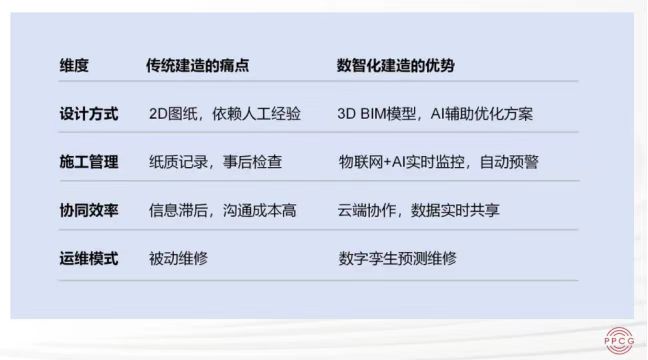
02
Five Key Technologies of Smart Construction
1.BIM (Building Information Modeling) – The "Digital Brain" of Design
BIM is the core of Smart Construction. It integrates geometric and non-geometric data (structure, MEP - Mechanical, Electrical, Plumbing, Fire Protection - and finishes) through 3D visual modeling, enabling:
(1) Information Collaboration: Information sharing and collaboration across design, construction, and O&M phases, facilitating decisions and adjustments.
(2) Clash Detection: Simulated modeling of MEP systems optimizes pipeline layouts; detects clashes upfront, reducing rework.
(3) Energy Simulation: Optimizes office space lighting, ventilation, and HVAC systems, enhancing comfort.
2. AI & Big Data – The "Intelligent Engine" of Construction
(1) Intelligent Scheduling: Predicts timelines based on historical data, optimizing resource allocation.
(2) Defect Identification: AI analyzes site photos against design models to automatically detect issues like hollow walls or cracks.
(3) Cost Prediction: Big Data analyzes material price fluctuations for more accurate budgeting.
3. Prefabrication – The "Precision Gear" of Construction
(1) Modular Design:Breaks buildings into standardized, reusable modules, boosting design efficiency and facilitating production/construction.
(2) Smart Factory Production: Utilizes automated production lines and intelligent inspection for prefabricating building modules, ensuring precision.
(3) Dry Construction: Assembles prefabricated modules using mechanical connections/bolting, reducing wet trades, accelerating construction, and enhancing sustainability.
4. IoT (Internet of Things) – The "Smart Site Manager"
Uses sensors, cameras, AR (Augmented Reality), VR (Virtual Reality), 3D scanners, total stations, wearables, etc., for real-time site data collection:
(1) Personnel Safety: AI monitors for unsafe behaviors (e.g., missing hard hats, entering restricted zones).
(2) Equipment Management: Real-time monitoring of crane and hoist status to prevent failures.
(3) Environmental Monitoring: Automatic reporting of PM2.5, CO₂, temperature, humidity, TVOC (Total Volatile Organic Compounds), noise levels, promoting green sites.
5. Digital Twin – The "Predictive Expert" of O&M
Creates a virtual "twin" model of the physical office space, enabling real-time mapping, interaction, and simulation between the physical and digital realms.
(1) People Flow Simulation: Optimizes space layout for enhanced employee efficiency.
(2) Fire Simulation: Precisely simulates fire scenarios, analyzing evacuation times, routes, and behavior in real-time.
(3) Predictive Maintenance: Real-time analysis of equipment (HVAC, elevators) data enables proactive repairs.
03
How Smart Construction Transforms Office Spaces
1. Design Phase: From "Experience-Driven" to "Data-Driven"
(1) Intelligent Space Planning: Leverages data capture, 3D, BIM, and AI to precisely analyze client needs (workstations, meeting rooms, etc.), quickly generating Test Fit layouts and mood boards for intuitive, efficient, and demand-aligned solutions.
(2) Parametric Design: Automatically generates multiple design options, selecting the optimal solution based on client needs, daylight, ventilation, etc.
2. Construction Phase: Transparency, Reduced Labor, Precision
(1) Paperless Construction: Workers reference digital parameters for quality checks, reducing errors.
(2) Progress Visualization: Managers view real-time progress via mobile apps for timely plan adjustments.
3. O&M Phase: Smart Office, Cost Reduction, Efficiency Boost
(1) Intelligent Energy Management: Automatically adjusts lighting/HVAC, reducing energy consumption by over 30%.
(2) Space Utilization Optimization: Sensors monitor meeting room usage to prevent waste.
04
Four Core Advantages of Smart Construction
1.Shortened Timelines: Design-construction collaboration reduces changes, accelerating project delivery by 20%-30%.
2.Cost Reduction: Precise material quantification lowers labor costs by over 15%.
3.Enhanced Quality: Digital QA/QC + Digital Twin O&M reduces complaints by 50%.
4.Green Certification: Data-driven management aids LEED/WELL certifications.
05
PPCG's Practical Application of Smart Construction
As a leader in premium office spaces, PPCG is at the forefront of Smart Construction innovation. Over the past three years, we have successfully applied these technologies in over 30 projects, boosting efficiency with cutting-edge tech and earning consistent praise from clients.
OPPO Academy Project:
Innovatively used Rhino + Grasshopper parametric design for precise aluminum panel fabrication parameters, enabling smart factory ordering.
Employed 3D point cloud scanning to create a 1:1 digital replica, optimizing irregular panel layouts.
Result: Client decision efficiency increased by 40%, communication cycles shortened by 35%, and overall timeline significantly compressed.
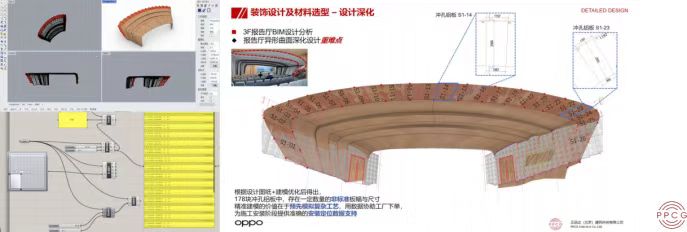
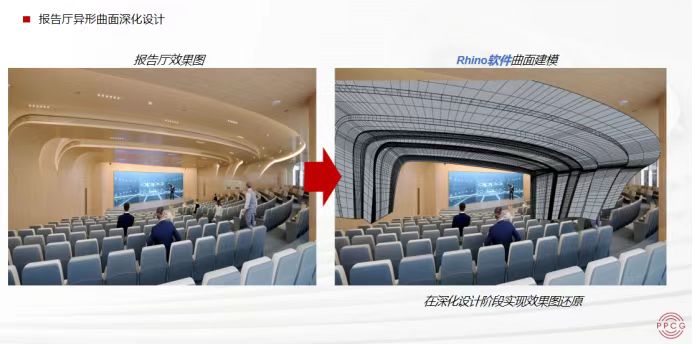
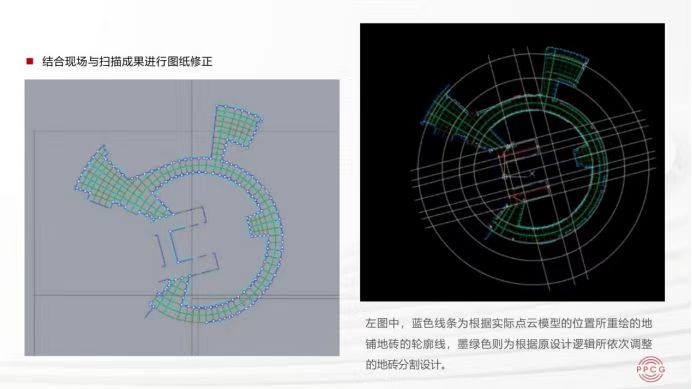
Meihua Group Project:
BIM modeling enabled full MEP clash detection, avoiding over 90% of on-site conflicts.
Dynamic construction simulation: 3D animations visualized critical node workflows for "what-you-see-is-what-you-get" guidance.
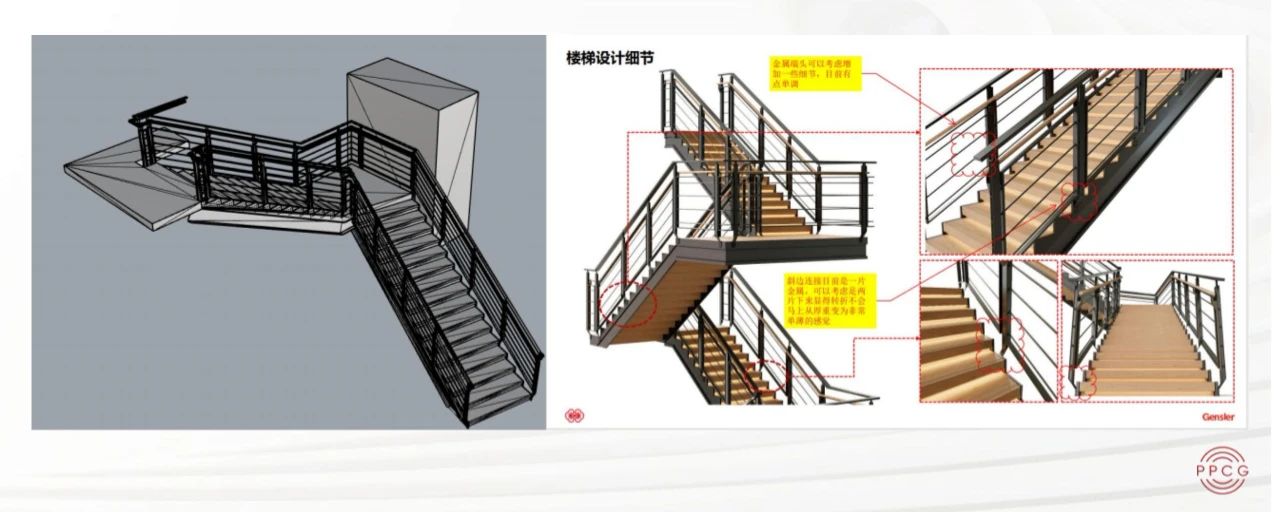
Mininglamp Technology Project:
High-precision point cloud scanning created a 1:1 digital site model, enabling scientific functional zoning, reducing iterations, and shortening planning by over 30%.
BIM-based MEP prefabrication identified and resolved potential clashes upfront, avoiding rework.
Smart Construction has also played key roles in projects for BMW, Tencent Dachan Bay, Yuanfudao Exhibition Hall, and Tahota Law Firm. Moving forward, PPCG will continue to explore and deepen Smart Construction capabilities to meet clients' high demands and standards, achieving significant efficiency gains in office space creation.

Conclusion
Smart Construction represents not just a technological upgrade, but an efficiency revolution for the commercial decoration industry. It enhances efficiency in design, construction, O&M, corporate decision-making, and space utilization. As 5G and AI mature, Smart Construction will become the industry standard, propelling the commercial decoration sector into a truly high-efficiency era.


